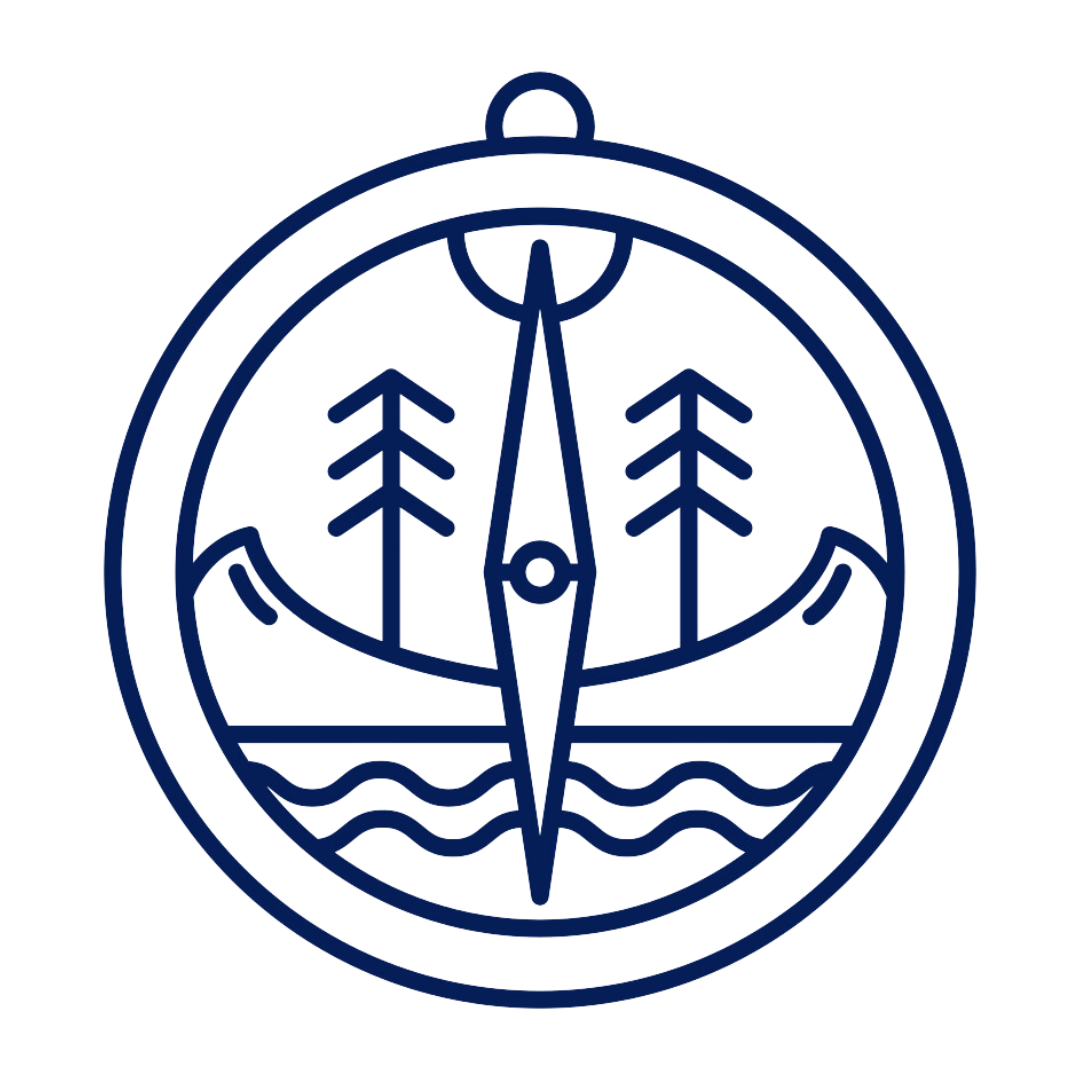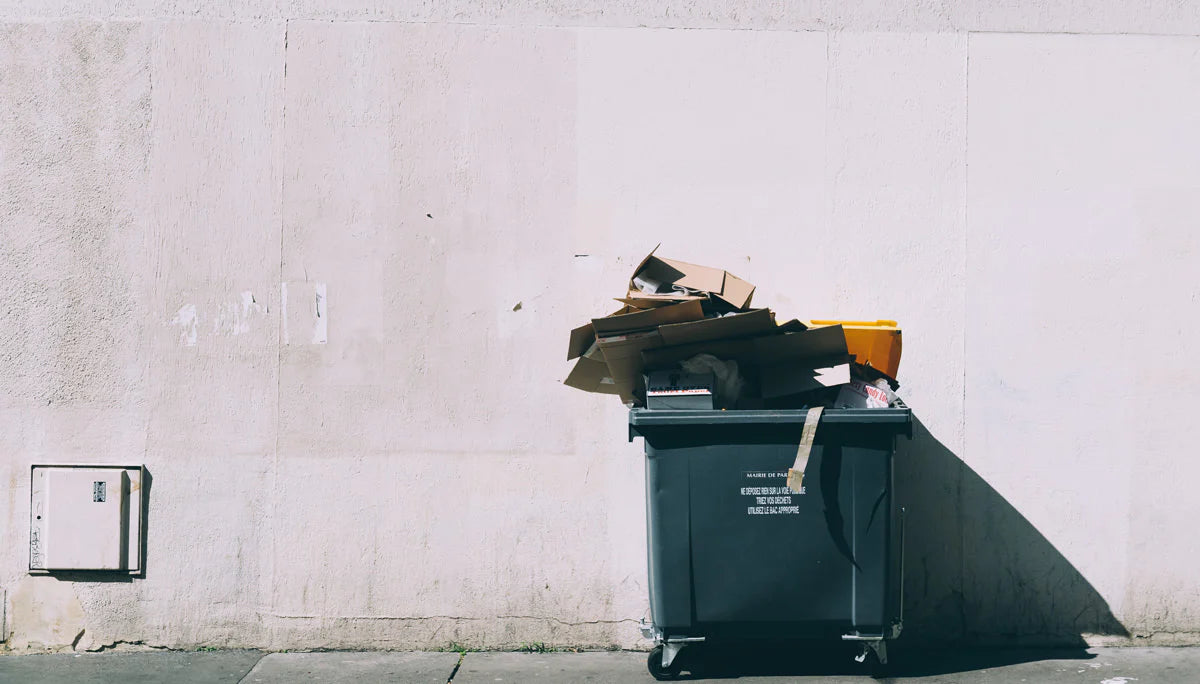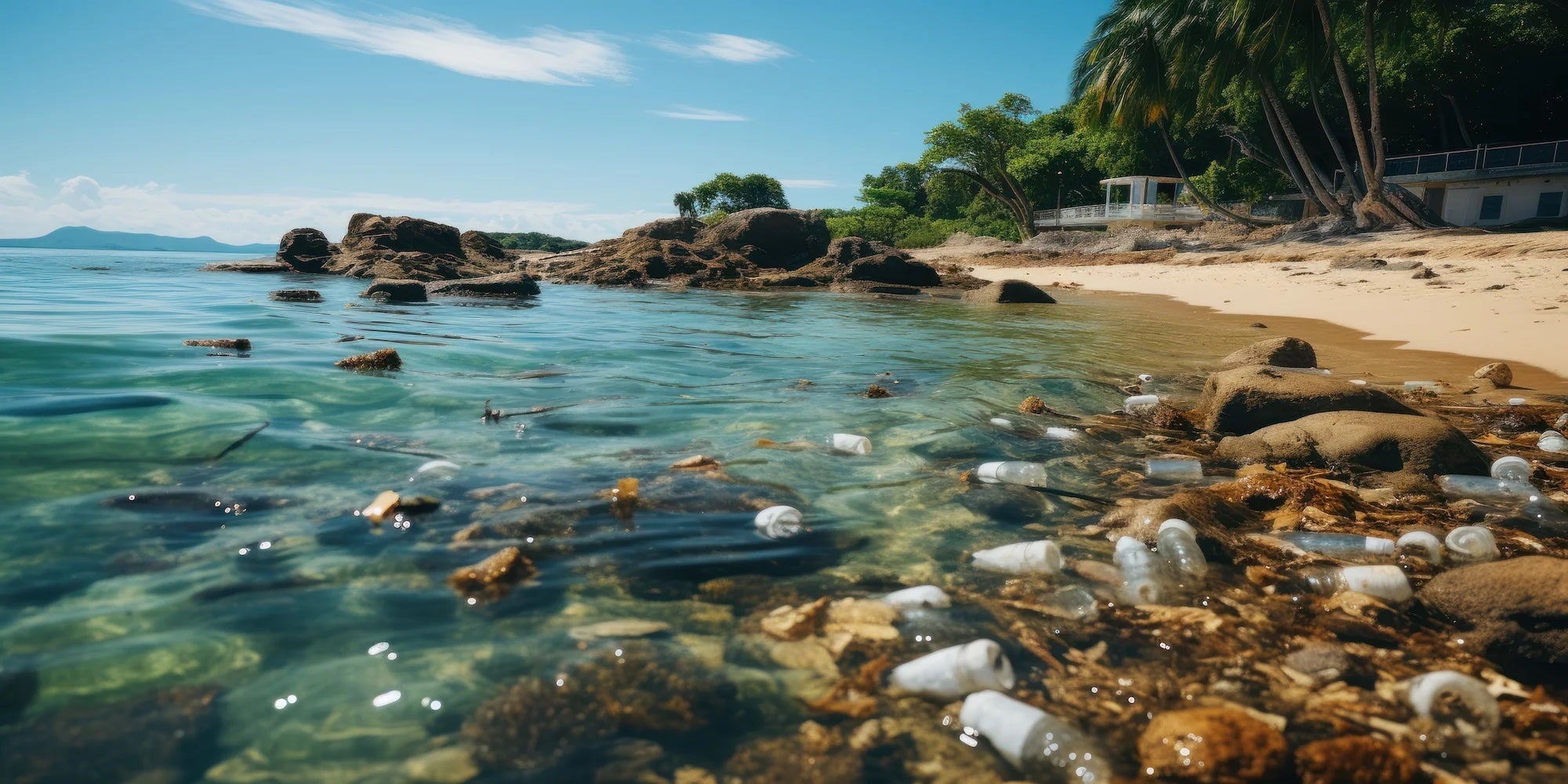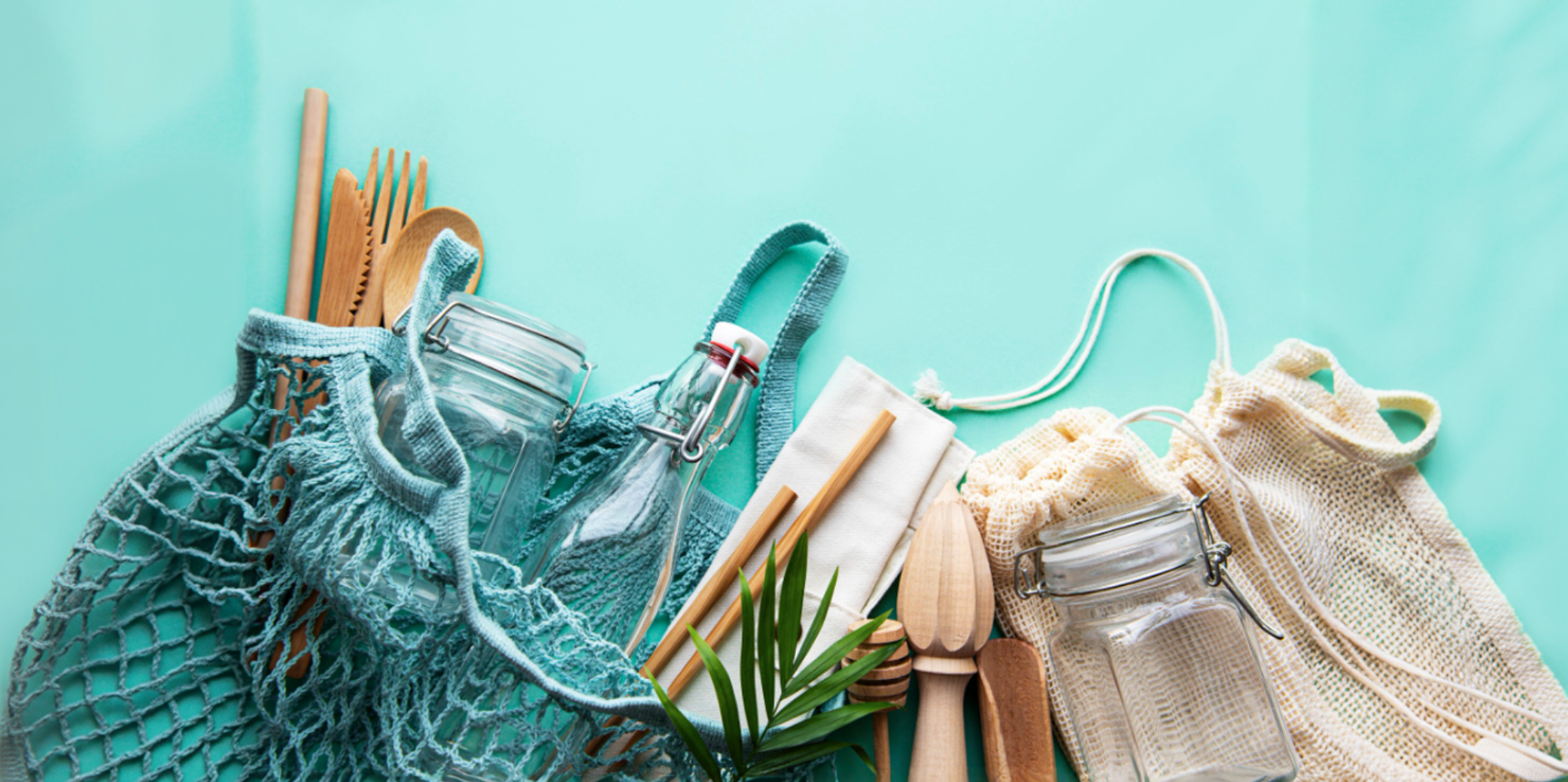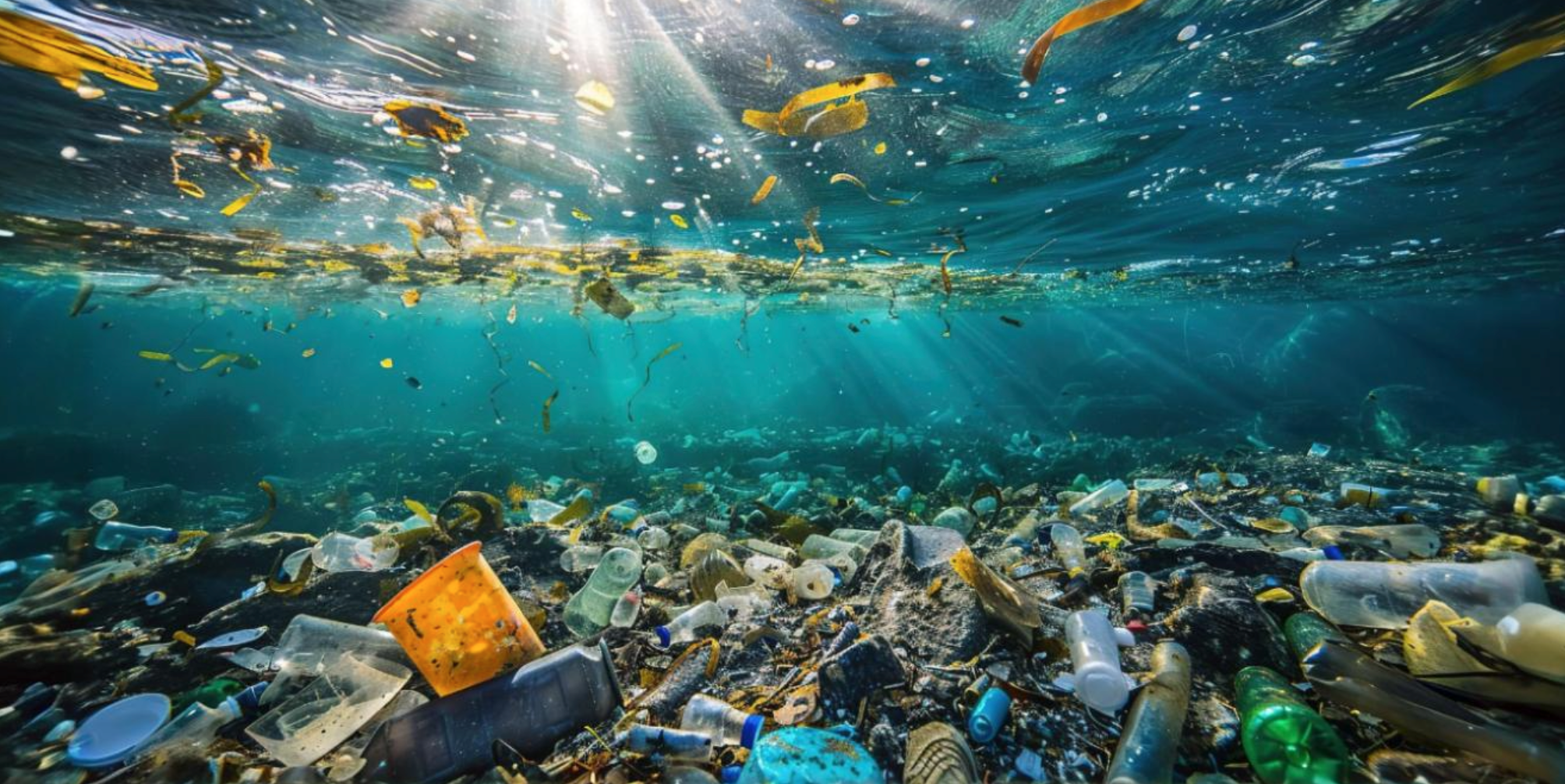
What is Ocean-Bound Plastic and why should you care?
Plastic pollution in the middle of the ocean might seem far away, but most of it started much closer to home. Within 50 kilometers of a coastline or river lies a zone scientists call ocean-bound. Here, plastic waste builds up, and if it’s not intercepted, wind and rain carry it out to sea. Once there, cleanup isn’t just harder—it’s also much more expensive.
In this blog, we break down what ocean-bound plastic (OBP) is, how plastic ends up in the ocean, and how you can help make a difference. We’ll also show how The BlueWave Collective transforms this waste into stylish, functional products.
What exactly does ocean-bound plastic mean?
Ocean-bound plastic is mismanaged or abandoned plastic waste sitting in coastal areas and along rivers, especially in regions lacking proper waste management systems. Once it hits the open sea, it breaks down into microplastics that linger for centuries, harm marine life, and eventually work their way back to humans through the food chain.
Globally, we produce more than 350 million tons of plastic each year. Only about nine percent of that gets recycled. The rest ends up in landfills, gets burned, or leaks into nature—creating the perfect conditions for ocean-bound plastic.
How does plastic actually get into the ocean?
| Cause | How it happens |
|---|---|
| Urban runoff and drains | Heavy rains wash street litter straight into rivers. |
| Open dumpsites | Uncovered landfills lose plastic packaging in strong winds. |
| Rivers as superhighways | Ten major rivers funnel 90% of river plastic directly into the sea. |
| Tourism and fishing gear | Single-use plastics and abandoned fishing nets are swept out by tides. |
Intercepting plastic before it reaches the coastline is by far the most effective and affordable solution.
Why is it so important to stop ocean-bound plastic?
Plastic pollution doesn’t just harm the ocean. It affects us all.
Ecosystem damage
Sea turtles, seabirds, and fish often mistake plastic for food—with fatal consequences.
Human health
Microplastics attract harmful chemicals and return to us through seafood, salt, and even drinking water.
Climate impact
As plastic breaks down, it releases methane and ethylene—powerful greenhouse gases that speed up global warming.
Economic costs
Coastal cleanups, lost tourism, and damage to fisheries cost billions every year.
Stopping ocean-bound plastic at the source protects oceans, nature, and ourselves.
What can you do—and how does The BlueWave Collective help?
Simple actions to start today
Carry your own reusable water bottle and coffee cup.
Say no to single-use plastics like cutlery, straws, and bags.
Make sure to sort and recycle your waste properly, especially near waterways.
Support initiatives that collect plastic in high-risk zones.
What does The BlueWave Collective do?
Our bags and accessories are made from certified ocean-bound plastic. This plastic is responsibly collected in high-risk coastal areas and reused in a closed-loop system.
Every purchase:
-
Removes X plastic bottles from beaches and rivers
-
Pays fair wages to local plastic collectors
-
Creates demand for recycled materials, keeping plastic out of nature
Together, we can turn the tide
The BlueWave Collective has already given thousands of plastic bottles a second life. Our goal? Ten million bottles by 2030.
Explore the collection and start contributing to cleaner oceans today.
